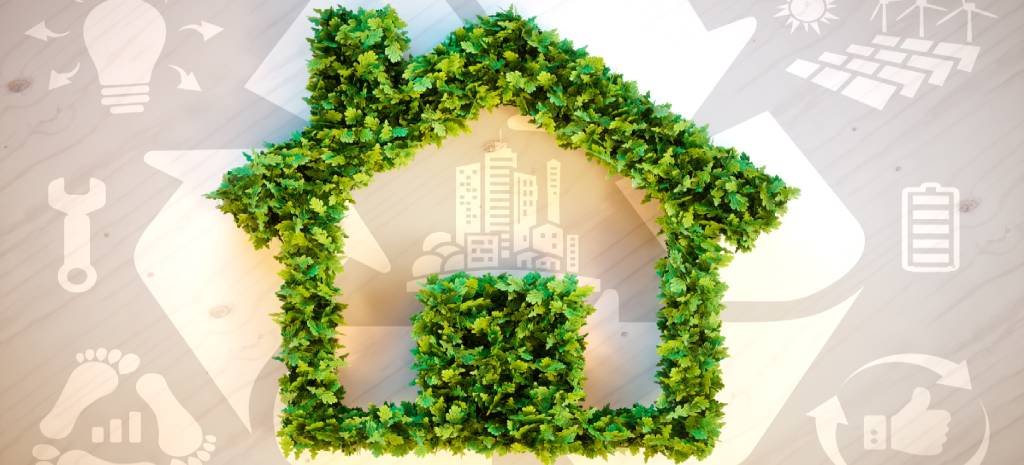Frequently asked questions - Environmental data
Do you have a question that is not on the list? Ask it by using the form at the bottom of the page

Environmental data
An LCA is a quantitative method to determine the total environmental impact across the product life cycle; from raw material extraction and production to end-of-life use and disposal. It allows companies to understand the environmental impact of their products and raw materials through the entire value chain. Read more information on environmental data here. Environmental declarations in the NMD must be prepared according to the The Environmental Performance Assessment Method for Construction Works (Assessment Method). Chapter 2 of the Assessment method provides the methodical requirements for determining the environmental performance of (building) products, installations and processes.
Data is generally easy to collect by the manufacturer. If data is difficult to collect, lump sum values that are generally accepted can be used where possible.
The data needed include: what raw materials are used, where do they come from, how are the raw materials processed to arrive at the final product and what maintenance is required during use of the product. The necessary data and data quality requirements are described in the Assessment Method.
The ECI score indicates the environmental impact over the life cycle of a product by adding up weighted scores for different impact categories and life stages. For more information on this weighting, see section 3.6 of the Assessment Method.
A negative ECI score may result from one impact category or life stage, and therefore does not automatically mean a favourable environmental impact in all impact categories or during all life stages. It is therefore important to look at the environmental impact per category and phase in addition to the overall ECI score to identify unfavourable environmental impacts.
For category 3 environmental declarations, the underlying environmental burdens by impact category and life stage can be analysed to get a better understanding of where and how the environmental burden arises. This provides a deeper understanding of the overall environmental burden.
Please note that for category 1 and 2 environmental declarations, this analysis cannot be performed due to the confidentiality of the underlying data. In these cases, only the overall ECI score is displayed.
The lead time for this process is highly dependent on the life cycle analysis and varies between products and LCA issuers. Once the environmental data are entered, a recognised LCA approver checks the input. The environmental data are then published in the NMD. The steps to follow can be found on our website. More information about registering data
A background process is a process that impacts a product from a producer or supplier, but over which the producer or supplier has no direct influence and that takes place elsewhere in the chain; the production of electricity or a raw material, for instance.
An environmental declaration in the NMD is valid for 5 years. You will receive a timely notice from the NMD Foundation requesting that the environmental statement be updated.
An end-of-life processing scenario is a percentage breakdown by processing options of a product (component). Processing options include landfill, incineration, recycling (whether or not after reprocessing) and reuse. Depending on the specific scenario and the efficiency of the recycling process, more or fewer materials are released for recycling which can help reduce the environmental impact of construction. Read more about end-of-life treatment scenarios here
An end-of-life treatment scenario is a percentage breakdown by treatment options of a product (component). Processing options include landfill, incineration, recycling (whether or not after reprocessing) and reuse. Depending on the specific scenario and the efficiency of the recycling process, more or fewer materials are released for recycling which can help reduce the environmental impact of construction. Read more about end-of-life treatment scenarios here
LCA praticioners and LCA reviewers
The person who collects the data to conduct a life cycle assessment and performs the life cycle analysis is referred to as the LCA issuer. The supplier itself appoints the LCA issuer. The LCA issuer may come from within its own organisation or from outside, such as employees of specialised LCA consultancies. The relationship between the supplier and the LCA issuer is strictly confidential. The LCA approver tests the data based on the NMD Review Protocol. This reviewer is an independent and third party for the supplier. The LCA approver is appointed by NMD Foundation and is listed on the List of Recognised LCA approvers. The list of recognised LCA approvers can be found here
A general overview of LCA experts can be found here: www.vlca.nl
An LCA issuer who believes he is sufficiently qualified to be recognised to review LCAs for the purposes of the NMD can apply to the NMD Foundation to be designated as an independent, qualified third party to review LCAs (conducted by third parties).
A recognized LCA issuer (demonstrably) has the necessary knowledge and experience to independently compile detailed and reliable LCAs of materials and products used in the construction industry. This recognition can be seen as a first step towards qualification as a recognized LCA approver.
A recognized LCA issuer distinguishes himself from other LCA issuers because the recognized preparer (demonstrably) has extensive knowledge and sufficient work experience about and within the field. It is also a stepping stone to becoming more easily qualified as a recognized LCA rapprover in the future.
Yes, even a non-recognized LCA issuer can still submit data. This is especially for people who only do LCAs from the producer of building materials, for example.
A recognised LCA approver is an independent, qualified third party that specializes in producing and assessing LCAs. This change in terminology as of July 1, 2024 is intended to ensure the quality and independence of LCA reports and clearly distinguish between different roles within the field.
Subscribe to our Newsletter
Sign up now and receive our newsletter (in Dutch) 10 times a year!
